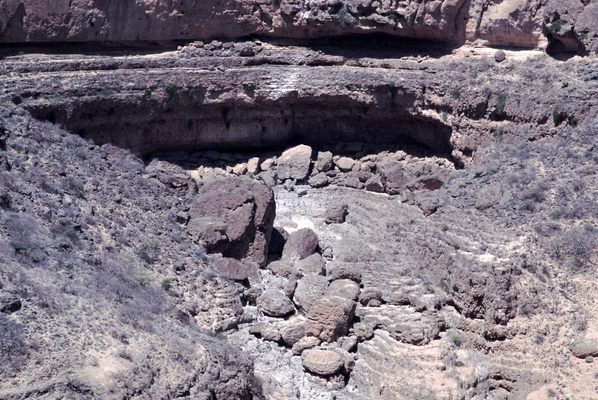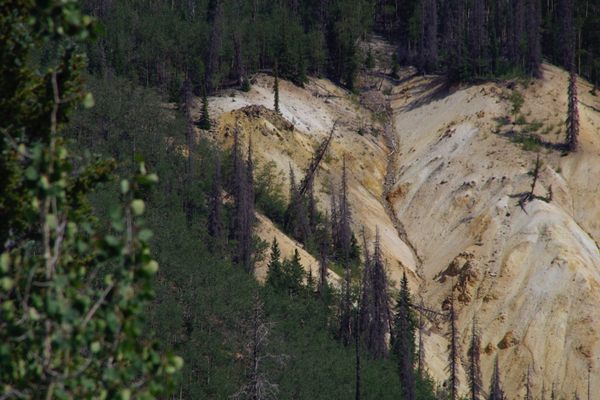About
Because of the geological structure of the subsoil, there’s a wealth of sinkholes scattered all over the Arabian Peninsula. Tayq Sinkhole’s claim to fame rests on its size, as it’s one of the largest sinkholes in the world.
It’s so big it resembles a deep wadi, or ravine. The sinkhole measures about half a mile across and its lowest point is 820 feet deep.
Like other sinkholes, Tayq was caused by water dissolving the karst limestone in the subsoil until the top layer of soil eventually collapsed. In this case, the water was fed by rivers running along Wadi Sharaa and Wadi Thirrat, which join at Tayq.
In May 2018, Cyclone Mekunu hit the region with extreme winds and rainfall. Five times the average amount of annual rainfall poured on the area over four days, causing floods and massive damage. During this time, so much water flowed into Tayq that it filled the whole sinkhole. It’s speculated that water slowly flowed to the sea via caves connecting Tayq Sinkhole to Tawi Atayr Sinkhole (five miles away) and the coast (nine miles away).
You can reach the bottom of the sinkhole via a steep path from the southern side, but if you approach the sinkhole from the main road, there is no way to reach the bottom other than abseiling from the edge. Local villagers undertake this hair-raising task when there is a drought and they need to fetch water from the cave at the bottom of the sinkhole. For those seeking an adrenaline rush, take caution: the ropes to hold onto are cheap and worn, and there's no-one stopping you from tempting your fate.
Related Tags
Know Before You Go
Taiq Sinkhole is 73 km East of Salalah. Coming from Salalah, a road branches off Route 49 soon after the town of Taqah. Tayq Sinkhole is sometimes referred to as Tayq Cave on road signs.
Community Contributors
Added By
Published
January 25, 2019
Sources
- https://www.tonywalsh.me/tayq-cave-sinkhole/
- https://www.thenational.ae/lifestyle/travel/need-relief-from-the-summer-heat-try-the-khareef-1.530638
- https://books.google.com/books?id=h5t5DQAAQBAJ&pg=PA308&lpg=PA308&dq=tayq+oman&source=bl&ots=IrtBVVt_VE&sig=ACfU3U1y2r7U9SMK_0Rev8gi900ut81TIg&hl=en&sa=X&ved=2ahUKEwj7g-vJz4TgAhUMMd8KHUWXBzQ4ChDoATAHegQIBBAB#v=onepage&q=tayq%20oman&f=false



























